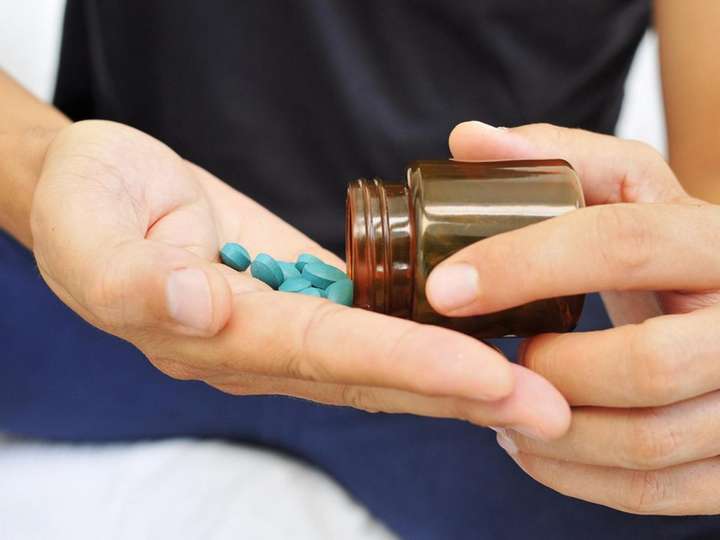Opioid addiction isn’t a new phenomenon. On the contrary, the whole U.S.A has been plagued by this issue for years. As per a 2019 survey by the Substance Abuse and Mental Health Services Administration, 10.1 million people aged 12 and above misused opioids in that year.

The nation has been dealing with every growing case of addiction for ages. Fortunately, today we have ways to help the patients seeking reform. Multiple patients have enrolled themselves into rehabilitation centers while others are consulting licensed professionals for help.
Targeting Opioid Addiction
With time, even the medications used to help these patients have evolved. Moving from extreme ways of treatment to slow and smooth-paced recovery. One crucial aspect of this form of treatment is the medicine being used. Suboxone is currently the most commonly adopted medication used to treat opioid dependency and addiction. However, this alone is not the end of the issue. A patient must practice patience and go through a whole ordeal of regular medication, therapy, and support group sessions before they can be independent of any opioid dependency.
In this article, let’s go over the basics of suboxone and four crucial factors about the medication that make it so preferable today.
What is Suboxone?
Suboxone is a combination medication of buprenorphine and naloxone used to treat opioid addiction and reduce the severity of its symptoms. Buprenorphine is an opioid partial agonist used to treat opioid use disorder. As a partial agonist, it creates effects of euphoria, respiratory depression and also helps in reducing chronic pain symptoms, but these effects are extremely mild. Naloxone, on the other hand, is an opioid antagonist – a medicine used to reverse the effects of an opioid overdose. This combination of the two drugs is used to help patients with opioid addiction by reducing their dependency on the drug.
4 Factors Every Patient Should Know About Suboxone
Now, let’s learn some basic factors about suboxone:
Factor 1: Suboxone Blocks the “Opioid Effect”
Suboxone as a drug is part of the medication-assisted treatment (MAT) of opioid addiction. Medications that are used for this purpose are referred to as “opioid antagonists” and are used to reduce dependency symptoms of drugs like heroin, oxycodone, and morphine.
If you know anything about the working of opiates, you’d know that these drugs bind with opioid receptors in the brain, gut, spinal cord, etc., and block pain signals from reaching the brain. They also lead to the release of endorphins (hormones) and dopamine, a neurotransmitter responsible for the euphoric pleasure that a person experiences. This relief from pain and euphoric experience is what leads most users to consume opioids on a regular basis, eventually leading to dependency. In other words, the “opioid effect”.
Suboxone blocks the receptors that crave opioids, thereby restricting the brain from sending withdrawal signals. Since Suboxone is a partial agnostic, it provides some level of relief, comfort, and euphoria without actually leading to any opioid-like high.
Factor 2: Suboxone is Less Habit-Forming Than Methadone
Before we start with the comparison, we’ll give you a run-through. Methadone is the predecessor of suboxone, a medication that was once used to treat opioid dependency before suboxone got introduced.
While both the drugs are used to treat the same issues, methadone has proven to be much stronger and more addictive than suboxone. The intensity of this medication mandates the presence of a physician when the treatment is started. On the other hand, Suboxone doesn’t require a doctor’s supervision during treatment. This medication is milder than methadone, therefore requiring a heavier dose to show similar effects.
As a drug, suboxone tends to taper off after giving a ceiling effect. This euphoric experience prevents you from consuming more of the medication, therefore avoiding potential overdosing.
Due to the specified reasons, methadone is no longer used in a majority of recovery programs, it is still a legal and approved form of substance abuse treatment.
Factor 3: Suboxone Comes in Two Forms
Suboxone can be found in the form of an oral tablet and an oral film. Both these products are sublingual products that dissolve when placed under the tongue. Both the products provide similar effects but cater to a few distinct requirements.
A tablet is the cheaper alternative and also ensures that consumption is more discreet. On the other hand, the sublingual film can be comparatively more expensive. However, patients might prefer a film as it is easier to cut down on your dose if you’re trying to completely abstain from its use. However, any changes in the dose of suboxone should be consulted with a doctor before it is put into effect.
Factor 4: Suboxone is Just One Part of Recovery
Suboxone or other opioid antagonists are not the final answer to opioid addiction. Instead, a lot goes into getting rid of all dependency and leading a life of abstinence. Suboxone, however, is definitely the first step in the right direction.
The recovery plan you or someone follows should have other aspects too. These include substance abuse counseling, regular primary care, support groups and sessions, and more. This even pertains to the daily habits that you inculcate in your life. The food you eat, how often you drink water, whether you exercise daily, and the like. While all of these factors have no direct impact on reducing a person’s dependence on opioids, it does help them create a more stable and routine-like environment. This routine will keep them occupied with other tasks and therefore, not leave anytime for unwanted cravings. Constant hydration and timely meals are also crucial to maintaining a healthy body.
Conclusion
Suboxone is a combination medication best suited to treat opioid withdrawal symptoms in patients enrolled in recovery programs. You can come across multiple clinics like Steady Care Medical that provide suboxone treatment for patients trying to lead an addiction-free life. Enrolling in support groups, group therapy or regular consultations with your therapist will also help your condition to improve faster.





